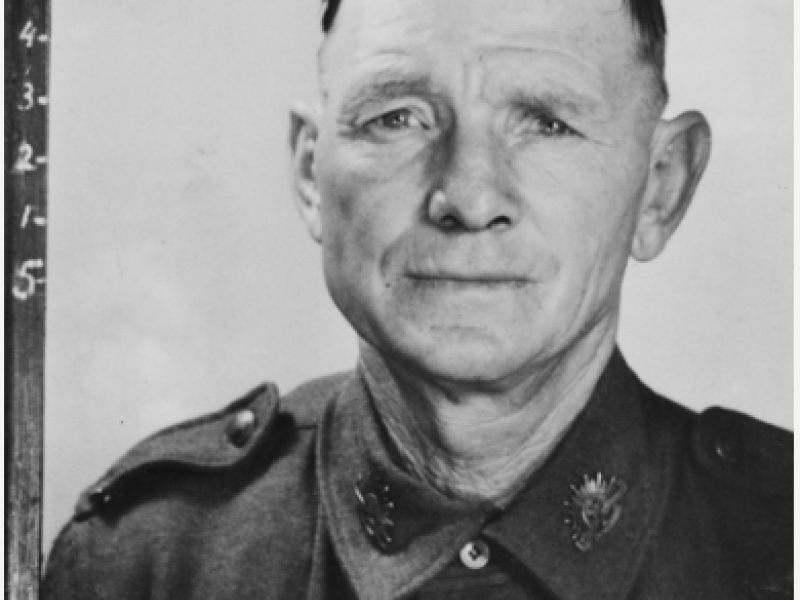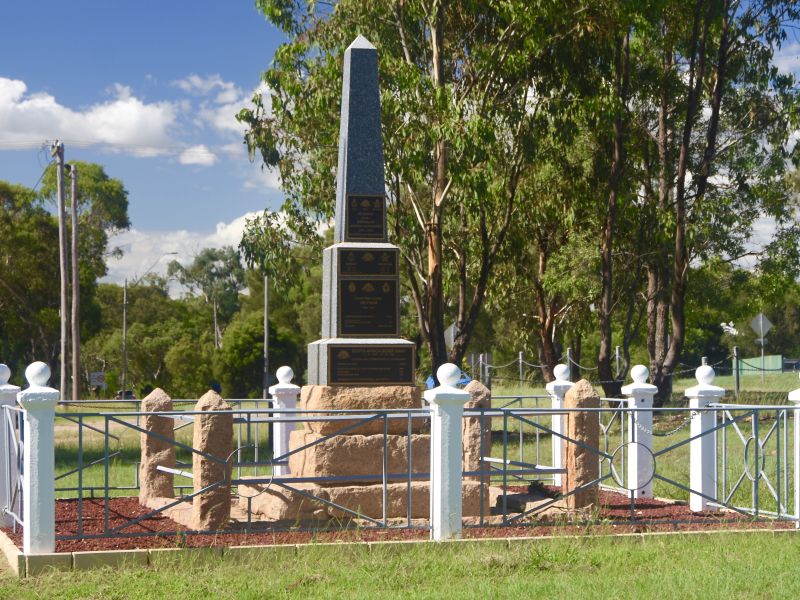Lance Sergeant Fred Lindsay Staggs, 2/18th Battalion, 2nd AIF
Fred Staggs was born on 29 April 1892 in Lismore, New South Wales, one of seven boys and three girls to John and Jemima Staggs. In 1908, the family moved to Inverell.
Staggs enlisted in the Australian Imperial Force with his brothers, Andrew and Neil, on 27 August 1914. Another brother, George, enlisted in 1916.
Fred and Andrew joined the 1st Battalion in time for the second and third waves of the Gallipoli landings at Anzac Cove.
On 19 May 1915, Andy and Fred were in the line together when Andy was shot through the neck. He was told to leave but remained to help carry ammunition. He was hit again and died.
Fred stayed on Gallipoli, and in September was appointed lance corporal, and after evacuating back to Egypt, to corporal. In 1916, he was hospitalised with a hernia, returned to Australia, and discharged from military service.
In 1917, Staggs married Alice Grace Hart, and had several children. Their son, Fred, would serve in the Second World War.
In January 1939, Staggs was an engine driver when he joined the Militia and was promoted to sergeant. He enlisted in the Second AIF in May 1940 at the age of 45, though he said he was 35.
In February 1941, Staggs embarked with the 2/18th Battalion aboard the famous ocean-liner-turned-troopship, the Queen Mary. On arriving in Singapore he was promoted to corporal.
His battalion fought fiercely with the Japanese when they entered the war in December 1941. On 15 February, Singapore fell and the Australians surrendered. Fred Staggs, among thousands, became a prisoner of war.
The Japanese soon mobilised the POWs into working parties. In July, “B Force” was formed at Changi. Staggs volunteered, assured of better food and conditions but found himself on a hellish sea journey to Borneo, crammed into cargo holds for 11 days before arriving at Sandakan.
Conditions there were terrible. Prisoners, including the sick, were forced at gunpoint to work on the construction of a military airstrip, and often beaten by their captors. Illness and death ravaged the camp and food was scarce.
The completed airfield was soon destroyed by Allied aircraft bombing. By late 1944, with Allied forces advancing, the Japanese sent 2,000 Australian and British prisoners westward to Ranau, in Borneo’s rugged interior.
Weak and sick prisoners staggered for about 260km along jungle tracks. Many died on the way, their bodies never recovered. Those unable to continue were killed; those too weak to march were left behind in Sandakan, where all died or were killed. Only six – all Australians – out 1,000 sent to Ranau survived the war.
The Sandakan “death march” remains the greatest single atrocity committed against Australians in war.
Fred Staggs died on a Sandakan death march on 31 March 1945. He was 52 years old.
For years afterwards, Fred’s loving wife, Alice, and his family would honour his memory on the anniversary of his death with tributes in the local newspaper.
Christina Zissis, Editor, Military History Section
- Australian War Memorial https://www.awm.gov.au/collection/E4377

 Australian War Memorial
Australian War Memorial